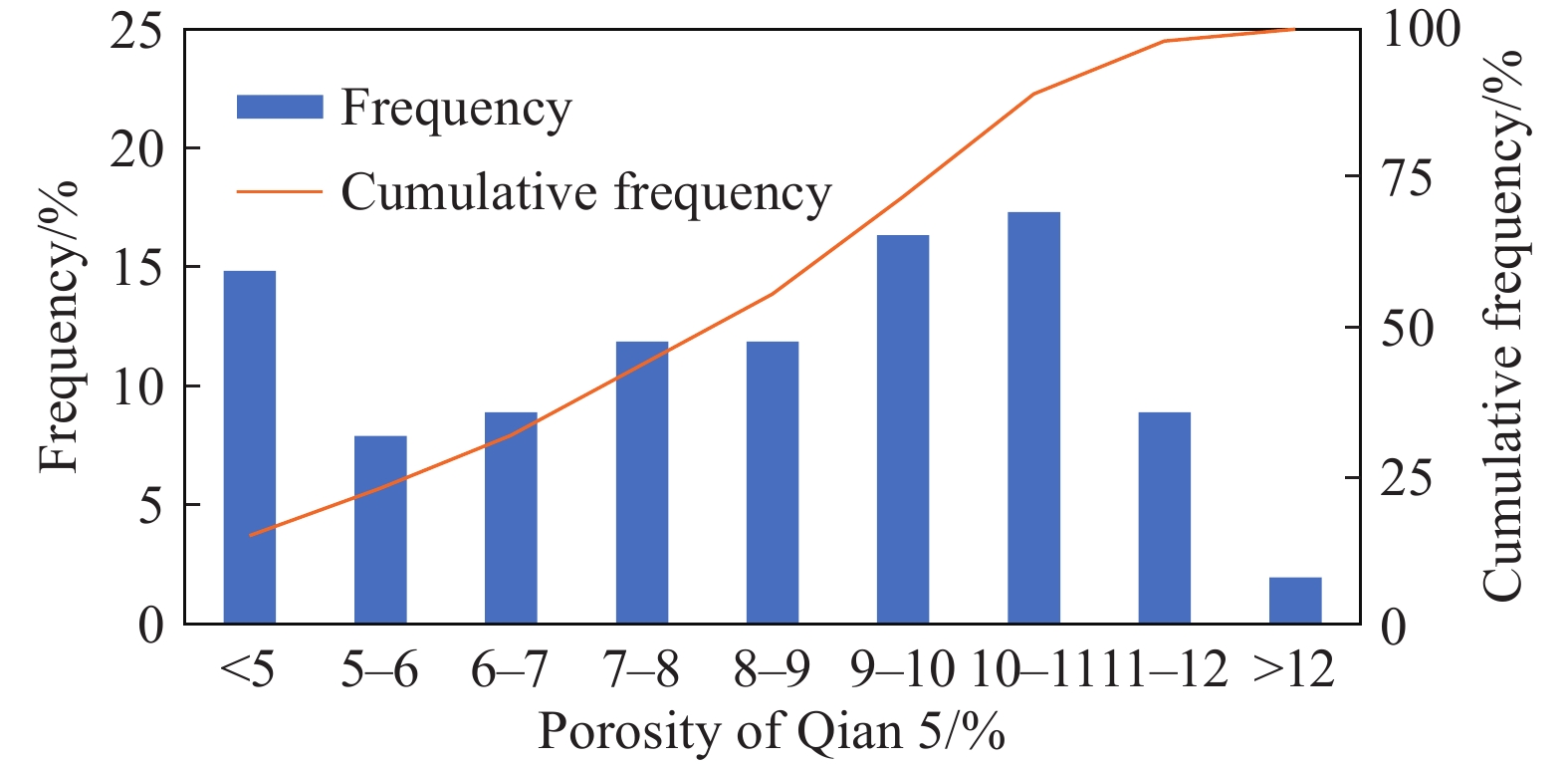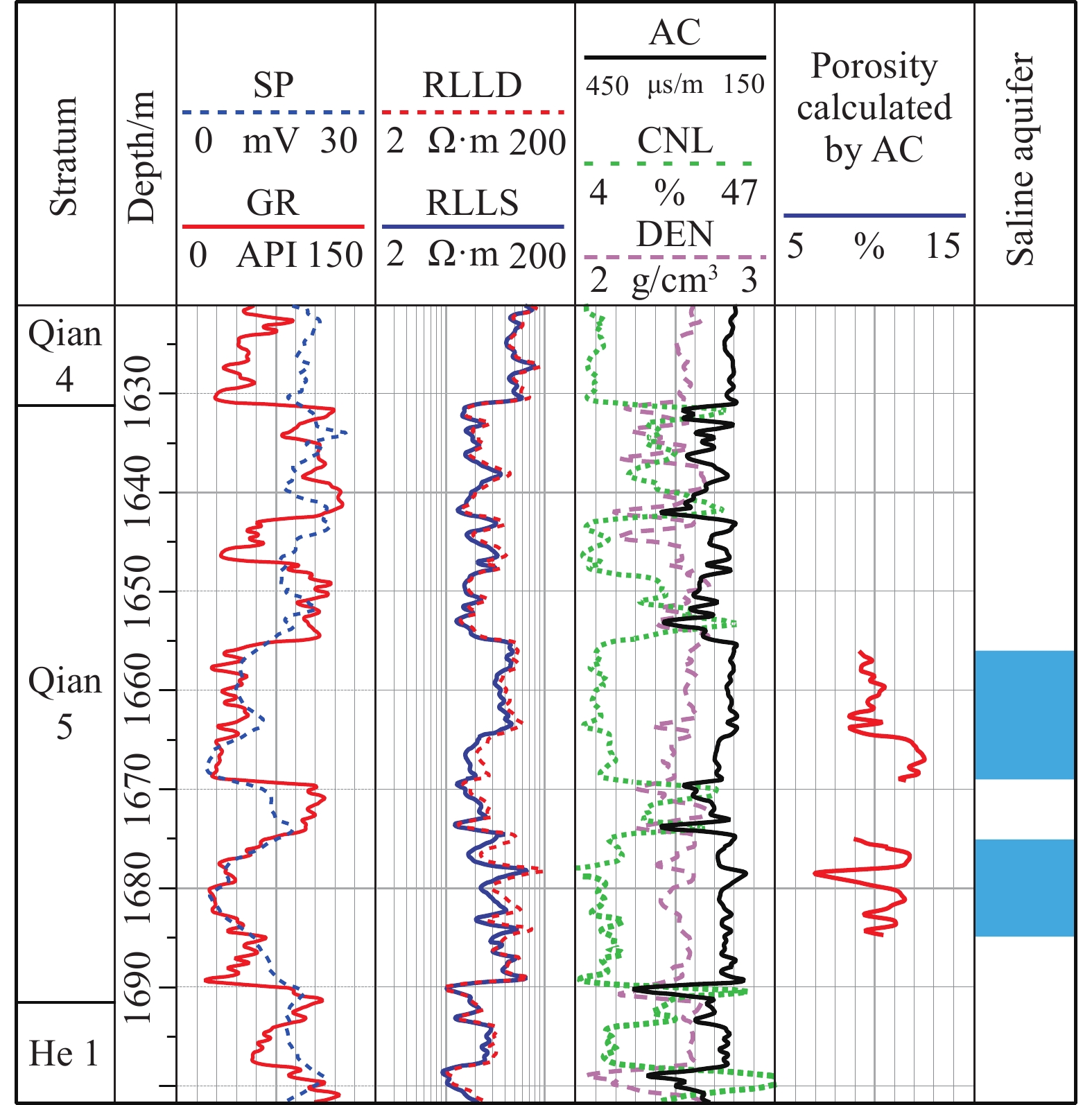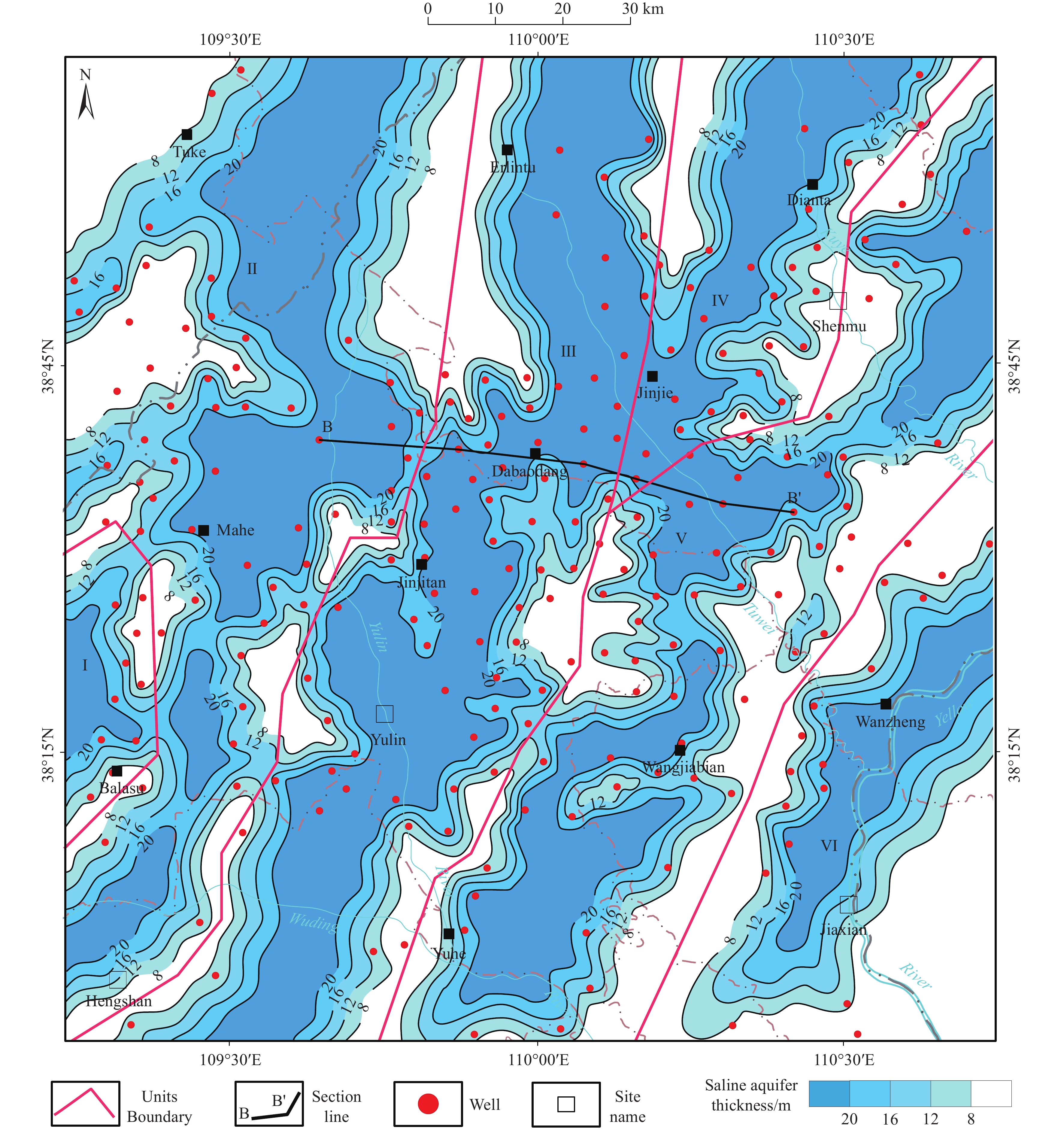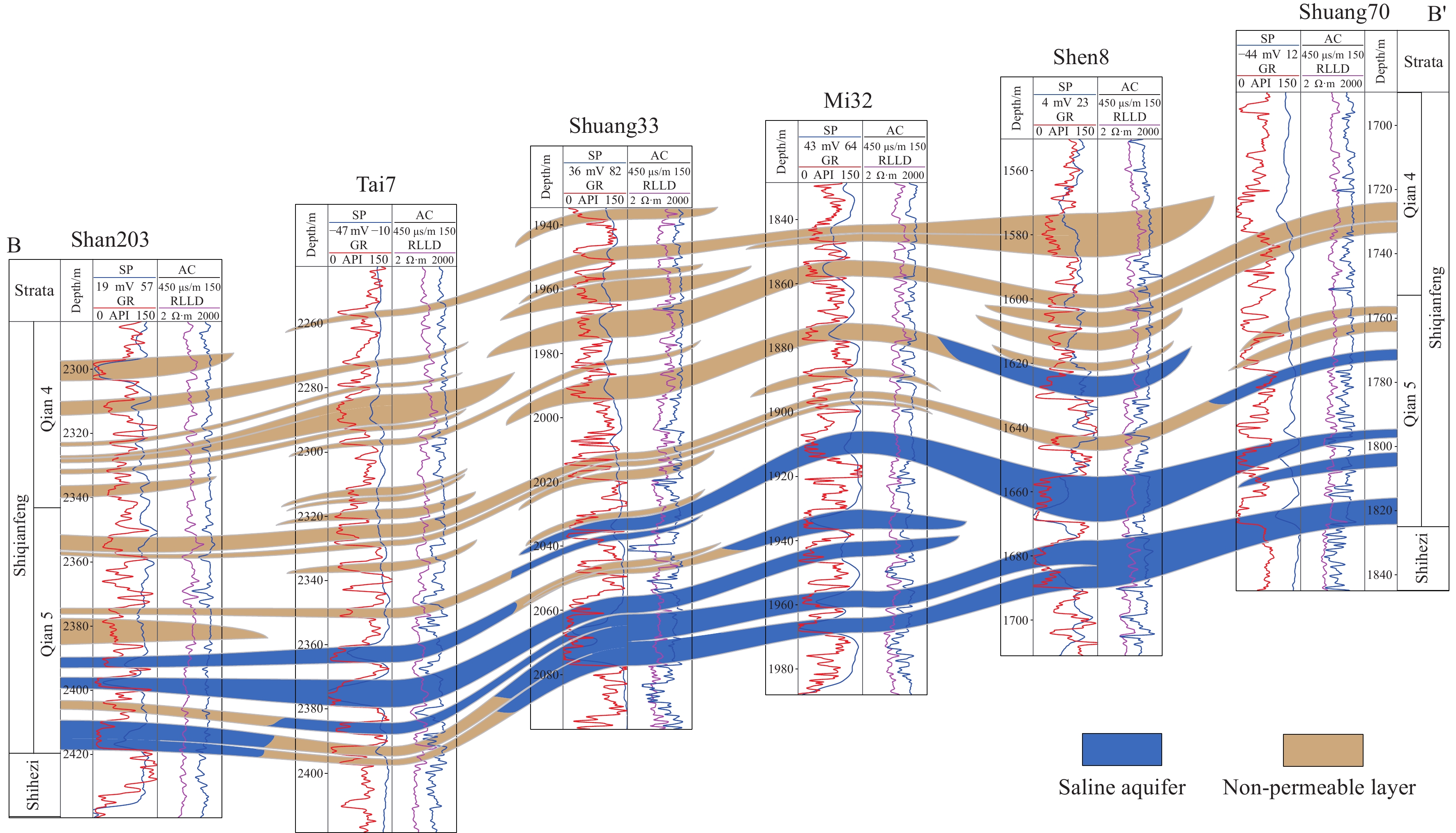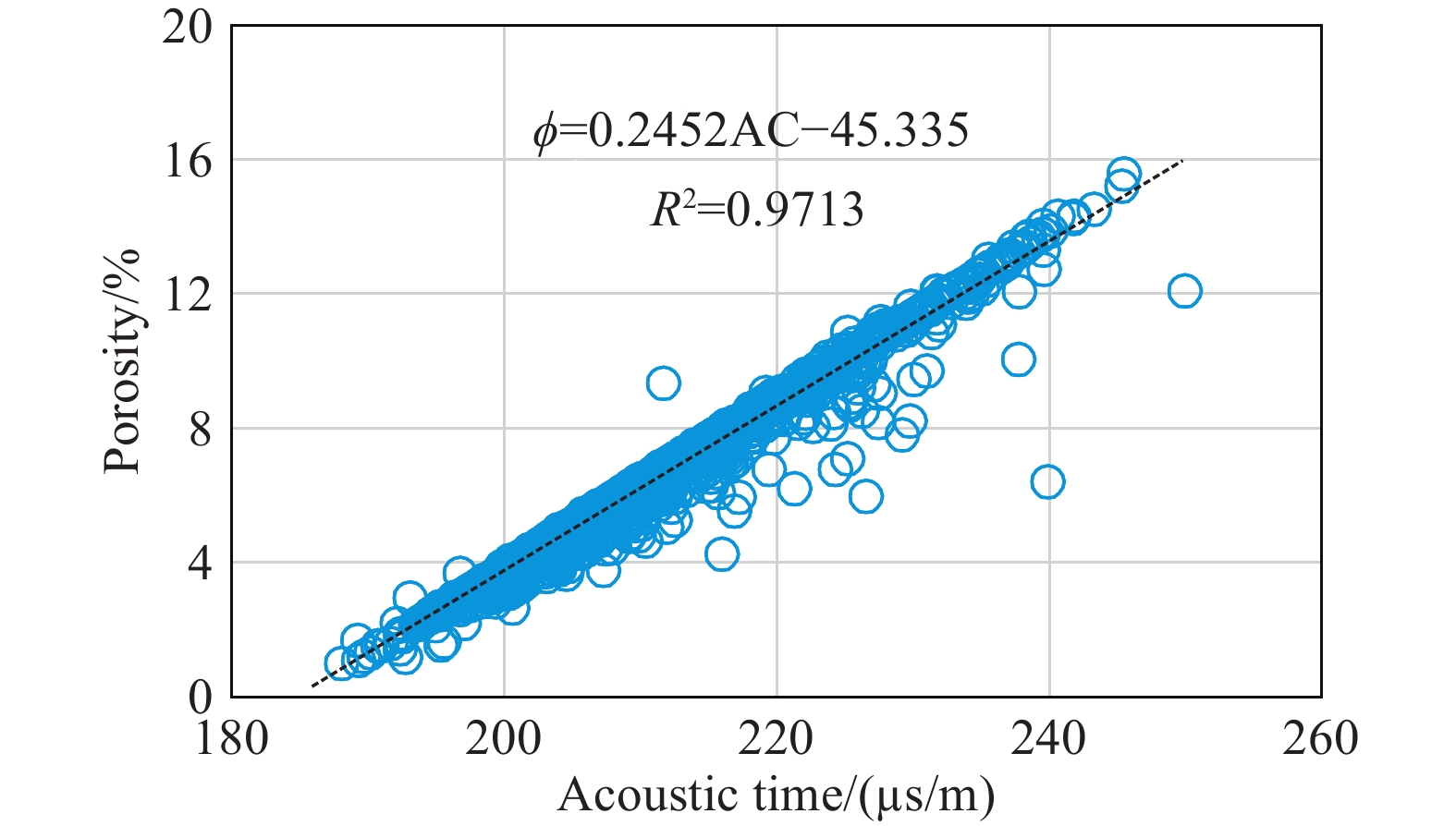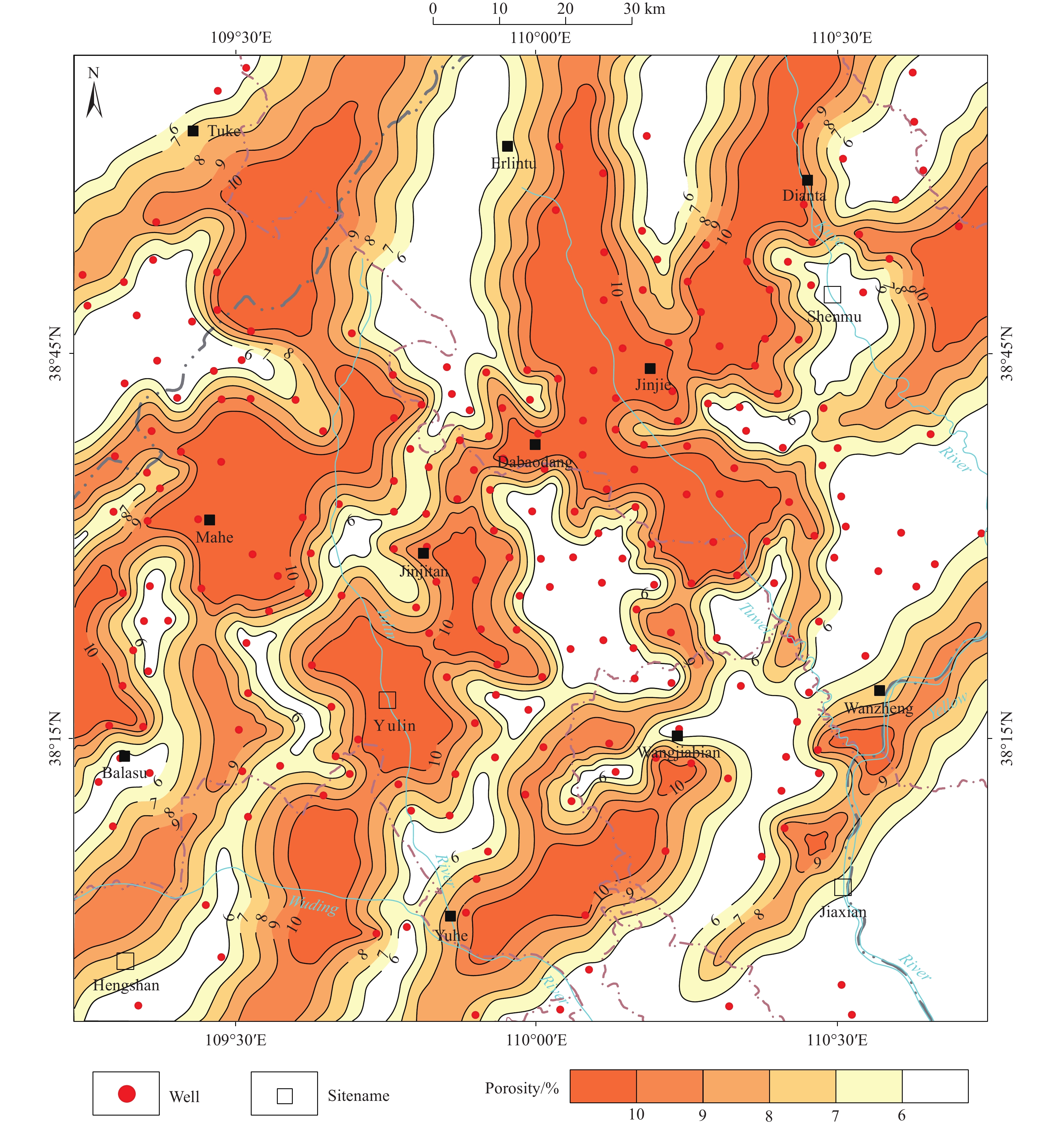| Citation: | Yan Li, Peng Li, Hong-jun Qu, Gui-wen Wang, Xiao-han Sun, Chang Ma, Tian-xing Yao, 2024. Potential evaluation of saline aquifers for the geological storage of carbon dioxide: A case study of saline aquifers in the Qian-5 member in northeastern Ordos Basin, China Geology, 7, 12-25. doi: 10.31035/cg2023045 |
Potential evaluation of saline aquifers for the geological storage of carbon dioxide: A case study of saline aquifers in the Qian-5 member in northeastern Ordos Basin
-
Abstract
The well-developed coal electricity generation and coal chemical industries have led to huge carbon dioxide (CO2) emissions in the northeastern Ordos Basin. The geological storage of CO2 in saline aquifers is an effective backup way to achieve carbon neutrality. In this case, the potential of saline aquifers for CO2 storage serves as a critical basis for subsequent geological storage project. This study calculated the technical control capacities of CO2 of the saline aquifers in the fifth member of the Shiqianfeng Formation (the Qian-5 member) based on the statistical analysis of the logging and the drilling and core data from more than 200 wells in the northeastern Ordos Basin, as well as the sedimentary facies, formation lithology, and saline aquifer development patterns of the Qian-5 member. The results show that (1) the reservoirs of saline aquifers in the Qian-5 member, which comprise distributary channel sand bodies of deltaic plains, feature low porosities and permeabilities; (2) The study area hosts three NNE-directed saline aquifer zones, where saline aquifers generally have a single-layer thickness of 3‒8 m and a cumulative thickness of 8‒24 m; (3) The saline aquifers of the Qian-5 member have a total technical control capacity of CO2 of 119.25 × 106 t. With the largest scale and the highest technical control capacity (accounting for 61% of the total technical control capacity), the Jinjie-Yulin saline aquifer zone is an important prospect area for the geological storage of CO2 in the saline aquifers of the Qian-5 member in the study area.
-

-
References
Bachu S. 2000. Sequestration of CO2 in geological media: Criteria and approach for site selection in response to climate change. Energy Conversion and Management, 41(9), 953–970. doi: 10.1016/s0196-8904(99)00149-1 Bachu S. 2003. Screening and ranking of sedimentary basins for sequestration of CO2 in geological media in response to climate change. Environmental Geology, 44(3), 277–289. doi: 10.1007/s00254-003-0762-9 Bachu S. 2008. CO2 storage in geological media: Role, means, status and barriers to deployment. Progress in Energy and Combustion Science, 34(2), 254–273. doi: 10.1016/j.pecs.2007.10.001 Bachu S. 2015. Review of CO2 storage efficiency in deep saline aquifers. International Journal of Greenhouse Gas Control, 40(9), 188–202. doi: 10.1016/j.ijggc.2015.01.007 Bachu S, Adams J. 2003. Sequestration of CO2 in geological media in response to climate change: Capacity of deep saline aquifers to sequester CO2 in solution. Energy Conversion and Management, 44(20), 3153–3175. doi: 10.1016/s0196-8904(03)00101-8 Benson SM, Surles T. 2006. Carbon dioxide capture and storage: An overview with emphasis on capture and storage in deep geological formations. Proceedings of the IEEE, 94(10), 1795–1804. doi: 10.1109/jproc.2006.883718 Cao ML, Chen JP. 2022. Geological evaluation of CO2 deep saline aquifer storage site selection. Acta Geologica Sinica, 96(5), 1868–1882 (in Chinese with English abstract). Diao YJ. 2017. Study on the Researvoir Characterization and CO2 Migration Underground in the Shenhua CCS Demonstration Project Site, China University of Mining and Technology, Ph. D thesis, 1–34 (in Chinese with English abstract). Diao YJ, Ma X, Li XF, Zhang CL, Liu T. 2021. Study on the evaluation method of underground utilization space of CO2 geological storage in saline aquifers. Geological Survey of China, 8, 87–91 (in Chinese with English abstract). Diao YJ, Liu T, Wei N, Ma X, Jin XL, Fu L. 2023. Classification and assessment methodology of CO2 geological storage in deep saline aquifers. Geology in China, 50(3), 943-951 (in Chinese with English abstract). doi: 10.12029/gc20221030001. Goodman A, Hakala A, Bromhal G, Deel D, Rodostab T, Frailey S, Small M, Allen D, Romanov V, Fazio J, Huerta N, Mcintyre D, Kutchko B, Guthrie G. 2011. U. S. DOE methodology for the development of geologic storage potential for carbon dioxide at the national and regional scale. International Journal of Greenhouse Gas Control, 5(4), 952–965. doi: 10.1016/j.ijggc.2011.03.010 Guo JQ, Wen DG, Zhang SQ, Xu TF, Li XF, Diao YJ, Jia XF. 2015. Evaluation and demonstration project of carbon dioxide geological storage potential in China. Geological Survey of China, 2(4), 36–46 (in Chinese with English abstract). Guo YQ, Li WH, Guo BC, Zhang Q, Chen Q, Wang RG, Liu X, Ma Y, Li ZC, Zhang MT, Li BQ. 2019. Sedimentary system and paleogeographic evolution of Ordos Basin. Paleogeography, 21(2), 293–318 (in Chinese with English abstract). He B, Xu TF, Yuan YL, Tian HL, Hou ZY, Wang FG. 2016. An analysis of the influence factors on CO2 injection capacity in a deep saline formation: A case study of Shiqianfeng Group in the Erdos Basin. Hydrogeology & Engineering Geology, 43(1), 136–142 (in Chinese with English abstract). Hou GC, Zhang MS, Liu F, Wang YH, Liang YP, Tao ZP, Zhao ZH, Hu FS, Su XS, Lv Y, Xie Y, Wang WK, Wang XY, Yang YY, Lu Q, Jiao YQ, Yang YC, Cui XD, Ma JL, Yin LH. 2008. Groundwater exploration in Ordos Basin. Geological Publishing House, Beijing, 66–80. Jia LX. 2021. Earth sciences critical to achieving net zero emission of greenhouse gas in the context of carbon neutrality. Geology in China, 48(4), 1304 (in Chinese with English abstract). Kumar A, Ozah R, Noh M, Pope GA, Bryant S, Sepehmoori K, Lake LW. 2004. Reservoir simulation of CO2 storage in deep saline aquifers. SPE Journal, 10(3), 336–348. doi: 10.2118/89343-ms Li FC, Zhang Y, Zhang XJ, Zheng CY, Li XF, Hu LS, Peng HM. 2014. Study on the suitability evaluation method of CO2 geological storage in deep saline aquifer. Journal of Glaciology and Geocryology, 36, 649–660 (in Chinese with English abstract). Lindeberg E, Wessel-Berg D. 1997. Vertical convection in an aquifer column under a gas cap of CO2. Energy Conversion and Management, 38(SUPP.1), 229–234. doi: 10.1016/s0196-8904(96)00274-9 Liu CY, Zhao HG, Gui XJ, Yue LP, Zhao JF, Wang JQ. 2006. Spatial-temporal coordinates of evolution-transformation of Ordos Basin and its response to hydrocarbon accumulation (mineralization). Acta Geologica Sinica, 80(5), 617–638 (in Chinese with English abstract). Liu SX, Peng B, Liu Q, Fan C. 2019. Economic-related CO2 emissions analysis of Ordos Basin based on a refined STIRPAT model. Greenhouse Gases Science and Technology, 9(5), 1064–1080. doi: 10.1002/ghg.1920 Liu Z, Zhu WQ, Sun Q, Jin B, Xu XM, Zhang HF. 2012. Geothermal-geopressure system of petroliferous basins in China. Acta Petrolei Sinica, 33(1), 1–17 (in Chinese with English abstract). doi: 10.1038/aps.2011.197 Ma DY, Chen YH, Wang YB, Guo MQ, Qu L, Zhao JZ, Wu HY. 2021. Evaluation of sealing performance of upper Paleozoic caprock in eastern Ordos Basin. Natural Gas Geosciences, 32(11), 1673–1684 (in Chinese with English abstract). Ma JF, Li L, Wang HF, Du Y, Ma JJ, Zhang XL, Wang ZL. 2022. Carbon capture and storage: History and the road ahead. Engineering, 14(7), 33–43. doi: 10.1016/j.eng.2021.11.024 Ma X, Wen DG, Yang GD, Li XF, Diao YJ, Dong HH, Cao W, Yin SG, Zhang YM. 2021. Potential assessment of CO2 geological storage based on injection scenario simulation: A case study in eastern Junggar Basin. Journal of Groundwater Science and Engineering, 9(4), 279–291. doi: 10.19637/j.cnki.2305-7068.2021.04.002 Nan D, Jin ZQ, Wang HP, Lv ZW, Wang B. 2022. Research progress of logging data evaluation of CO2 geological storage in saline aquifer. Well Logging Technology, 46(3), 241–250 (in Chinese with English abstract). Popova OH, Small MJ, Mccoy ST, Thomas AC, Karimi B, Goodman A, Carter KM. 2012. Comparative analysis of carbon dioxide storage resource assessment methodologies. Environmental Geosciences, 3(3), 105–124. doi: 10.1036/eg.06011212002 Ren ZL, Zhang S, Gao SL, Cui JP, Xiao YY, Xiao H. 2007. Tectono-thermal evolution history of Ordos Basin and its significance for hydrocarbon accumulation and mineralization. Chinese Science (Series D: Earth Science), 37(S1), 23–32 (in Chinese with English abstract). Song TJ, Wan YY, Zhang WQ, Rao WD, Meng JY, Fan JJ, Gao RM. 2017. Applicability evaluation of CO2 geological storage in Songliao Basin based on grey correlation analysis. Geological Bulletin of China, 36(10), 1874–1883 (in Chinese with English abstract). Span R, Wagner W. 1996. A new equation of state for carbon dioxide covering the fluid region from the triple-point temperature to 1100 K at pressures up to 800 MPa. Journal of Physical and Chemical Reference Data, 25(6), 1509–1596. doi: 10.1063/1.555991 Sun TM, Liu SQ, Wang T. 2021. Research progress on potential evaluation of carbon dioxide geological storage in China. Coal Science and Technology, 49, 10–20 (in Chinese with English abstract). USDOE. 2006. Carbon sequestration atlas of the United States and Canada: Appendix A-Methodology for development of carbon sequestration capacity estimates, 71–85. Wan YY. 2012. Migration and Transformation Characteristics of CO2 in CO2 Geological Storage in Saline Aquifers of Shiqianfeng Formation in Ordos Basin. Changchun, Jilin University, Ph. D thesis, 1–79 (in Chinese with English abstract). Wang RG. 2016. Sedimentary facies analysis of Qian 5 Member of Shiqianfeng Formation in Yanchang exploration area, Ordos Basin. Petroleum Geology and Engineering, 30(06), 1–4+126 (in Chinese with English abstract). Wang ZJ, Tang X, Jing TY, You MX, Zhang JC, Li Z, Zhou J. 2022. Million-ton CO2 geological storage site selection strategy in China. Geoscience, 36(5), 1414–1431 (in Chinese with English abstract). Yang GD. 2015. Research on Geological Storage Mechanism of Carbon Dioxide in Ordos Basin. Wuhan, China University of Geosciences, Ph. D thesis, 1–80 (in Chinese with English abstract). Yang YZ, Shen PP, Song XM, Yang SY, Hu YL. 2009. Greenhouse gas geo-sequestration mechanism and capacity evaluation in aquifer. Journal of Jilin University(Earth Science Edition), 39(4), 743–748 (in Chinese with English abstract). Zhang DF, Li CS, Liu WX, Ma GW, Li WH, Lu ZX. 2021. Sedimentary characteristics of Upper Permian in Ordos Basin and its surrounding areas. Journal of Paleogeography, 23(1), 93–104 (in Chinese with English abstract). -
Access History

-
Figure 1.
Regional tectonic location (a) and burial depths of the top surface of the Qian-5 member (b) in the northeastern Ordos Basin.
-
Figure 2.
Outcrop characteristics of macroscopic reservoir (a) and petrology (b) of the Qian-5 member in the northeastern Ordos Basin.
-
Figure 3.
Comprison of the reservoir-caprock assemblages of saline aquifers in the Qian-5 member in the northeastern Ordos Basin (section position: A-A’ in Fig. 1).
-
Figure 4.
Plane view of the sedimentary facies in the Qian-5 member in the northeastern Ordos Basin.
-
Figure 5.
Intergranular pores (a) and feldspar dissolved pores (b) in reservoirs of the Qian-5 member. (a)‒well Shen-8, ×5, plane-polarized light; (b)‒well Yu-26, ×5, plane-polarized light. Lit refers to lithic fragment and An refers to feldspar minerals.
-
Figure 6.
Distribution frequencies of various pores in reservoirs of the Qian-5 member in the northeastern Ordos Basin (320 samples).
-
Figure 7.
Porosity distribution frequencies of reservoirs in the Qian-5 member in the northeastern Ordos Basin.
-
Figure 8.
Identification of saline aquifers based on log interpretation (well Shen-8).
-
Figure 9.
Thicknesses of saline aquifers in the Qian-5 member in the northeastern Ordos Basin. (a)‒frequencies of single-layer thickness; (b)‒frequencies of single-well cumulative thickness.
-
Figure 10.
Distributions of saline aquifers in the Qian-5 member in the northeastern Ordos Basin.
-
Figure 11.
Well sections of EW-directed saline aquifers in the northern part of northeastern Ordos Basin (section location: B-B’ in Fig. 10).
-
Figure 12.
Structural section of the groundwater system in the Ordos Basin (modified after Hou GC et al., 2008).
-
Figure 13.
Acoustic interval transit time vs. porosity of the northeastern Ordos Basin.
-
Figure 14.
Logging interpretation-derived porosities of the Qian-5 member in the northeastern Ordos Basin.

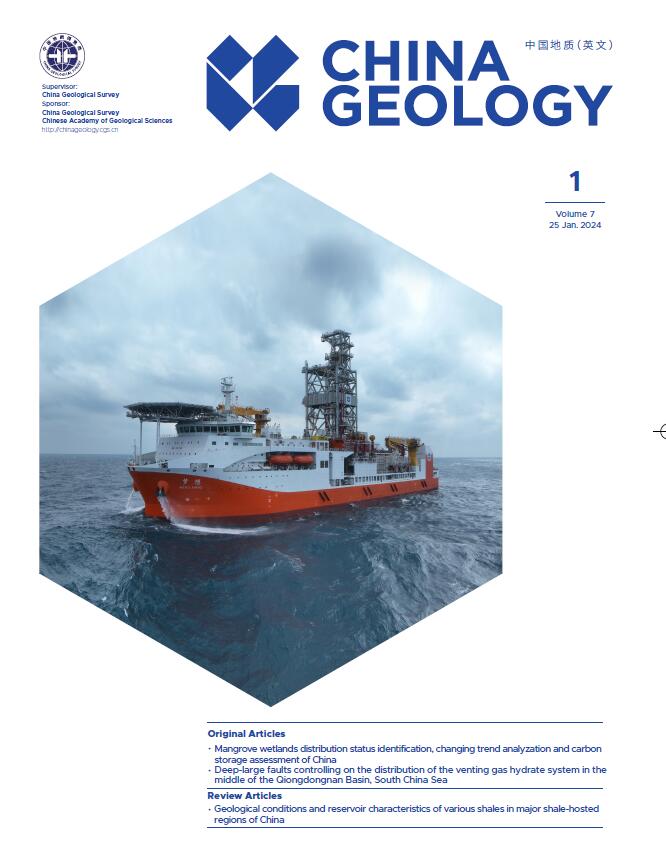



 DownLoad:
DownLoad:





